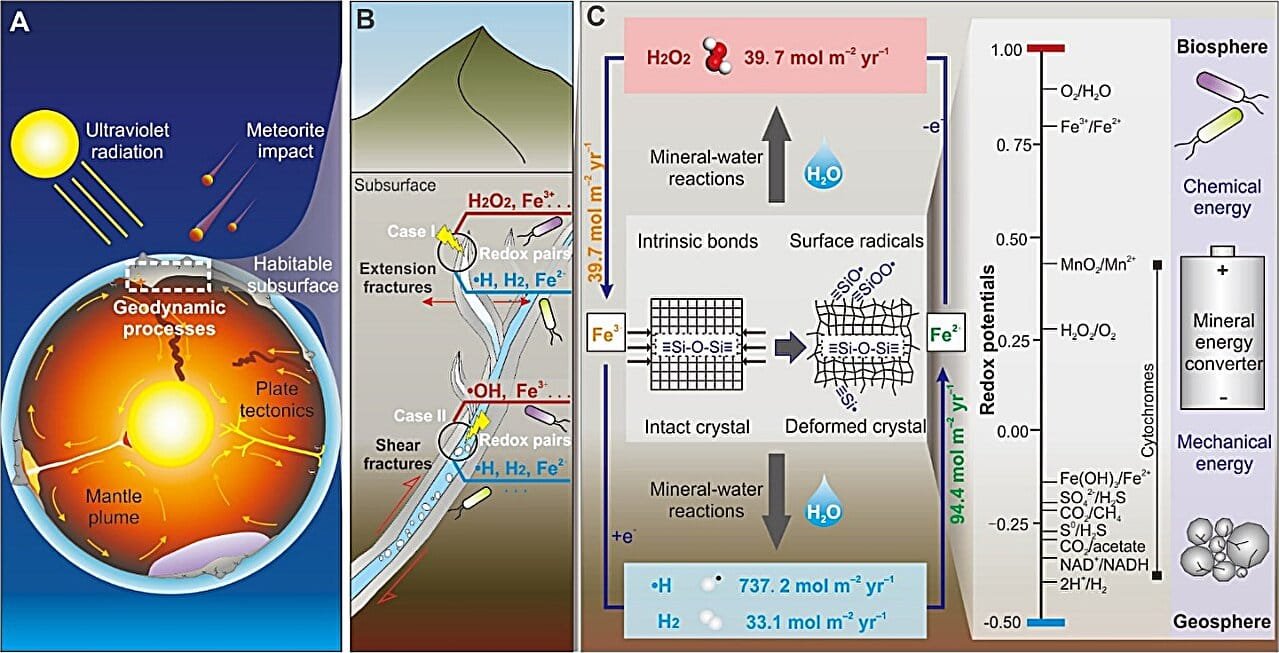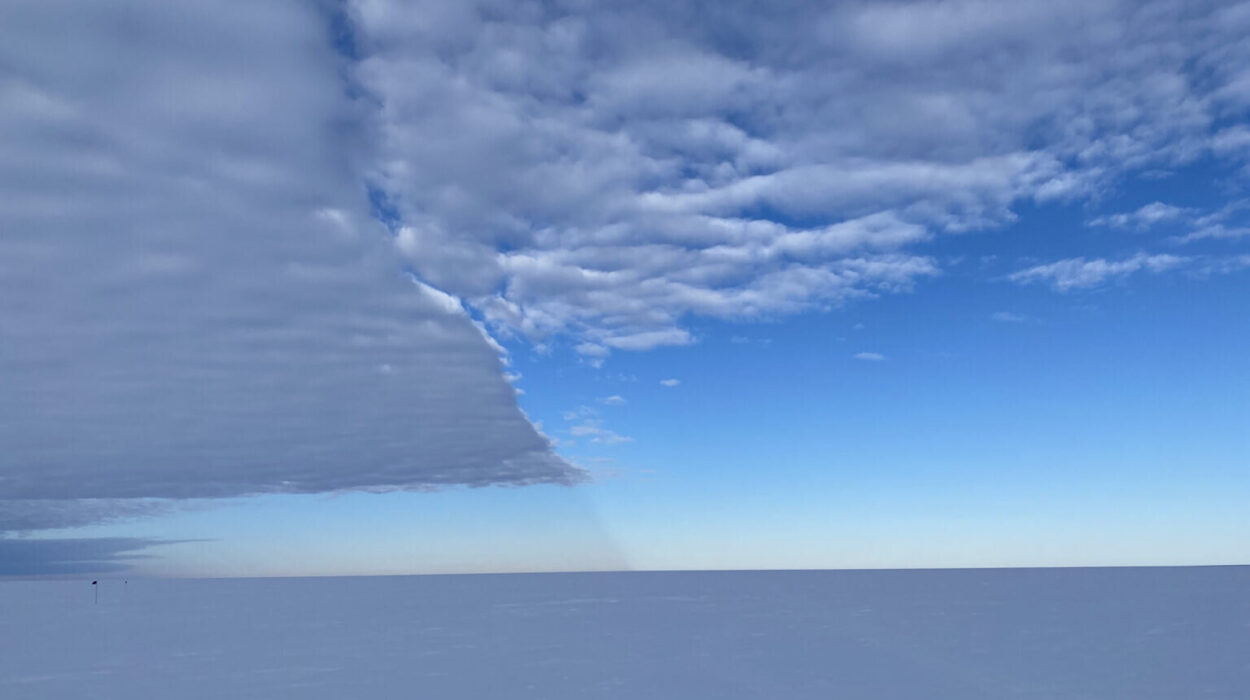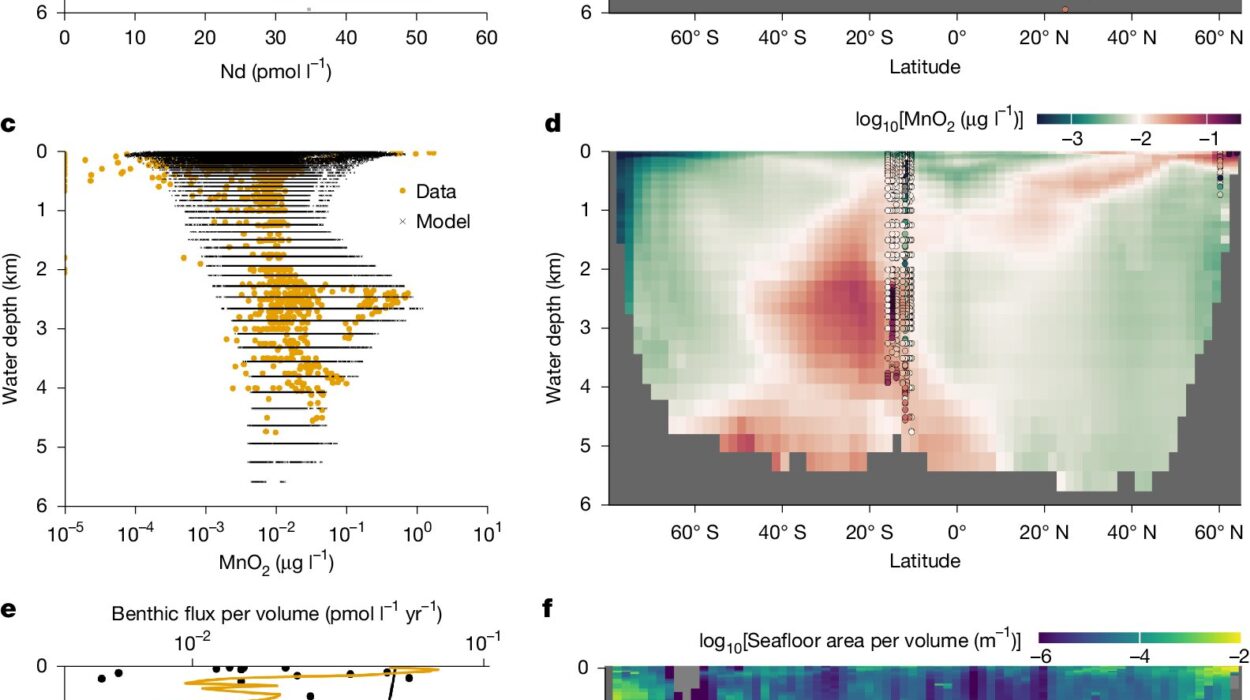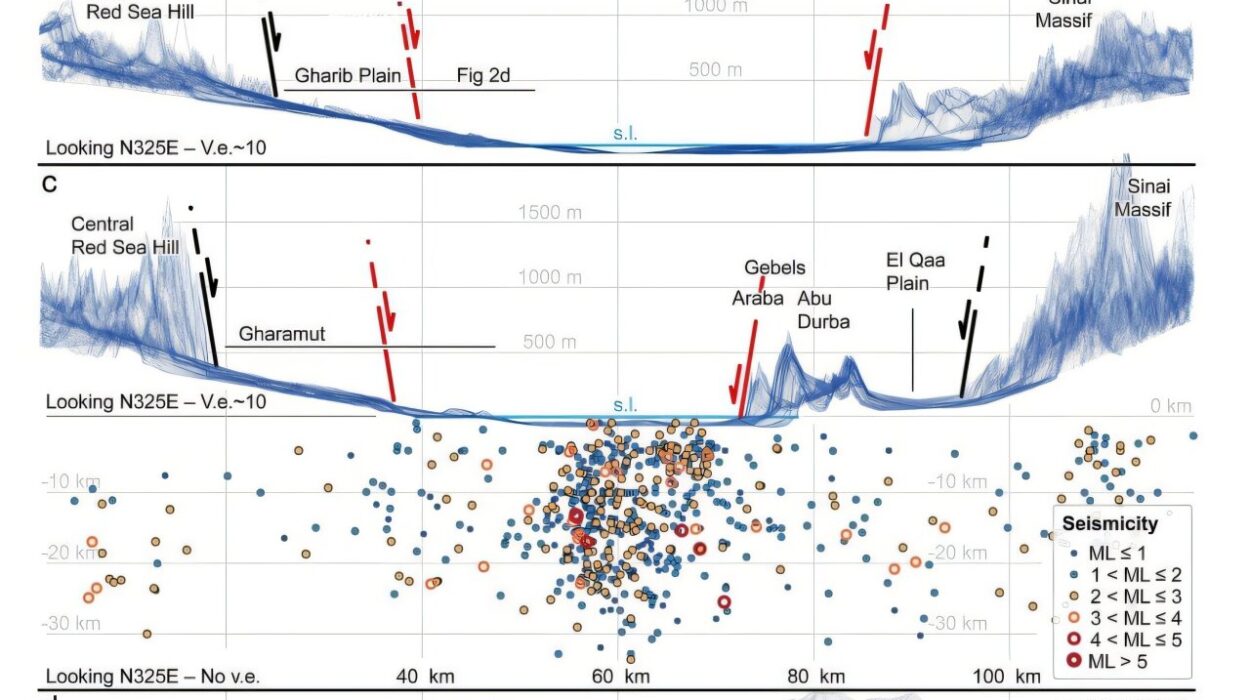For centuries, sunlight has been seen as the ultimate giver of life—a blazing force that fuels every living organism on Earth, directly or indirectly. Plants draw energy from it. Animals depend on those plants. Even in the darkest oceans, life clusters around the faint traces of its influence. The idea that “all life depends on sunlight” became a fundamental truth in biology—until now.
A recent breakthrough from a team of Chinese scientists has rewritten this assumption. Deep below Earth’s surface, in lightless, pressurized zones where no plant can grow and no ray of the sun ever penetrates, life not only exists—it thrives. And it thrives not by clinging to the remnants of sunlight, but by feeding on the powerful forces unleashed by Earth’s own restless crust.
This discovery, published in Science Advances, is more than just a revelation about Earth. It touches something profound: the possibility that life, in its most resilient and elemental form, might not be tethered to our star at all. It opens doors to understanding ecosystems beneath our feet—and perhaps far beyond our planet.
The Scientists Who Looked Into the Darkness
At the heart of this research stand two pioneering scientists: Professor He Hongping and Professor Zhu Jianxi, both from the Guangzhou Institute of Geochemistry, under the Chinese Academy of Sciences (CAS). For years, their team has been exploring the vast and poorly understood biosphere buried deep below the Earth’s surface.
These zones, far beneath the reach of tree roots or sunlight, have long been considered lifeless, too extreme to sustain anything more than minerals and water. But recent decades have proven otherwise. Across the world, deep boreholes, mines, and drill cores have begun to reveal a vibrant, hidden world of microbial life—a biosphere that may even rival the mass of all life on the surface.
This underground realm is not an extension of surface ecosystems. It’s a world with its own rules, driven by geochemical energy, not solar radiation. The lifeforms that populate it are microbial, yet astonishingly diverse, and they survive by harnessing the energy from chemical reactions between water and rock.
But the question that lingered—and haunted scientists—was this: where does that chemical energy truly come from? Hydrogen (H₂) has long been recognized as a key energy source for these microbes, but its exact origins in such abundance remained a mystery.
That is, until now.
Faults in the Earth—and Pathways to Life
To understand the genesis of this deep energy, Professors He and Zhu turned their attention to one of Earth’s most dynamic processes: crustal faulting.
When an earthquake strikes, or when pressure causes tectonic plates to shift, rocks deep in the Earth’s crust fracture. These fractures may seem like mere mechanical breaks, but they are chemical engines. The team proposed that the mechanical energy from these fractures, especially when rocks are torn apart under intense pressure, creates something extraordinary: free radicals.
These radicals—highly reactive atoms or molecules with unpaired electrons—have the capacity to rip apart water molecules. When they do, they unleash a suite of new compounds: molecular hydrogen (H₂), hydrogen peroxide (H₂O₂), and other oxidants. In essence, the simple act of rocks breaking creates a microchemical factory underground.
This process forms a redox gradient—a chemical seesaw of electron donors and acceptors—across the fractured zones. These redox gradients are precisely what microbes need to perform their metabolic miracles. And critically, they’re not leftovers from ancient times or external influences. They’re generated right there, in real-time, as Earth flexes and groans beneath our feet.
This realization turned a once purely geological phenomenon—earthquakes—into something far more profound: a source of biological energy.
An Explosion of Chemical Energy
What stunned the researchers was the scale of this hydrogen production. The hydrogen generated from faulting-related processes was measured to be up to 100,000 times more than from traditional pathways, such as serpentinization (a well-known chemical reaction between rock and water) or radiolysis (the breakdown of water by radiation).
This wasn’t a marginal finding. It was a tectonic shift—pun intended—in understanding subsurface life.
The fault zones acted like biological bellows, pumping hydrogen and oxidants into groundwater systems. When these met with iron-rich minerals, they drove redox reactions that supported entire microbial communities. Iron, present in two key forms—ferrous (Fe²⁺) and ferric (Fe³⁺)—was shuffled back and forth, oxidized or reduced, depending on the local chemical conditions. Each of these shifts released or stored energy, becoming part of a vast metabolic cycle.
Through this iron redox cycling, other elemental processes—carbon, nitrogen, sulfur—were also affected, intertwining the chemistry of life into the geology of Earth’s crust. What seemed to be barren rock was, in fact, alive with unseen purpose.
A World Without Sunlight—and Without Limits
This discovery reframes the deep biosphere as not just a passive zone of survival, but a dynamic ecosystem actively powered by Earth’s internal movements. The microbes inhabiting these fractured worlds are no longer evolutionary stragglers; they are explorers of chemical frontiers, thriving in places that defy imagination.
The implications go beyond Earth.
Crustal faulting is not unique to our planet. Mars, for example, has extensive fault systems and evidence of past water activity. If these same redox-driven reactions can occur in Martian rock, then the conditions for subsurface life may exist—even now. Similarly, moons like Europa or Enceladus, with their icy shells and rocky cores, may also host such fault-generated chemistry beneath their surfaces.
Professors He and Zhu noted that these systems could provide habitable environments elsewhere in the cosmos. In the vast darkness of space, where starlight rarely touches, planetary geology may still be kindling life.
Rewriting the Narrative of Life
Perhaps the most profound impact of this research is philosophical. For centuries, we imagined life as a fragile thread tied to the Sun, easily snapped in its absence. But now, we glimpse something far more resilient. Life that thrives not in warmth and light, but in darkness and pressure. Life that feeds not on photosynthesis, but on stone and stress. Life that is, in many ways, elemental.
This deep microbial biosphere is not just an anomaly. It’s a major component of Earth’s living system, perhaps even containing a significant fraction of its total biomass. It may have existed for billions of years, untouched by surface catastrophes, surviving mass extinctions, meteor strikes, and climate chaos. These organisms may be the true veterans of life on Earth—quietly enduring where others perished.
And now, through the lens of rock and radical, we begin to see them not just as curiosities, but as keys to the origins of life itself.
Conclusion: Life, the Great Chemist
In peeling back the crust of our planet, these Chinese scientists have revealed not just a new pathway for sustaining life, but a new definition of it. Life, it turns out, is not only a child of sunlight. It is a chemist, a survivor, a shape-shifter. It thrives where we least expect it—in the tremors of fault lines, in the silence of darkness, in the alchemy of rock and water.
We have always looked to the stars in search of life. But perhaps the real frontier has always been beneath our feet, whispering secrets from the fractures of stone. This discovery reminds us that life is not merely what happens in the light. It is what endures in the dark.
Reference: Xiao Wu et al, Crustal faulting drives biological redox cycling in the deep subsurface, Science Advances (2025). DOI: 10.1126/sciadv.adx5372. www.science.org/doi/10.1126/sciadv.adx5372






